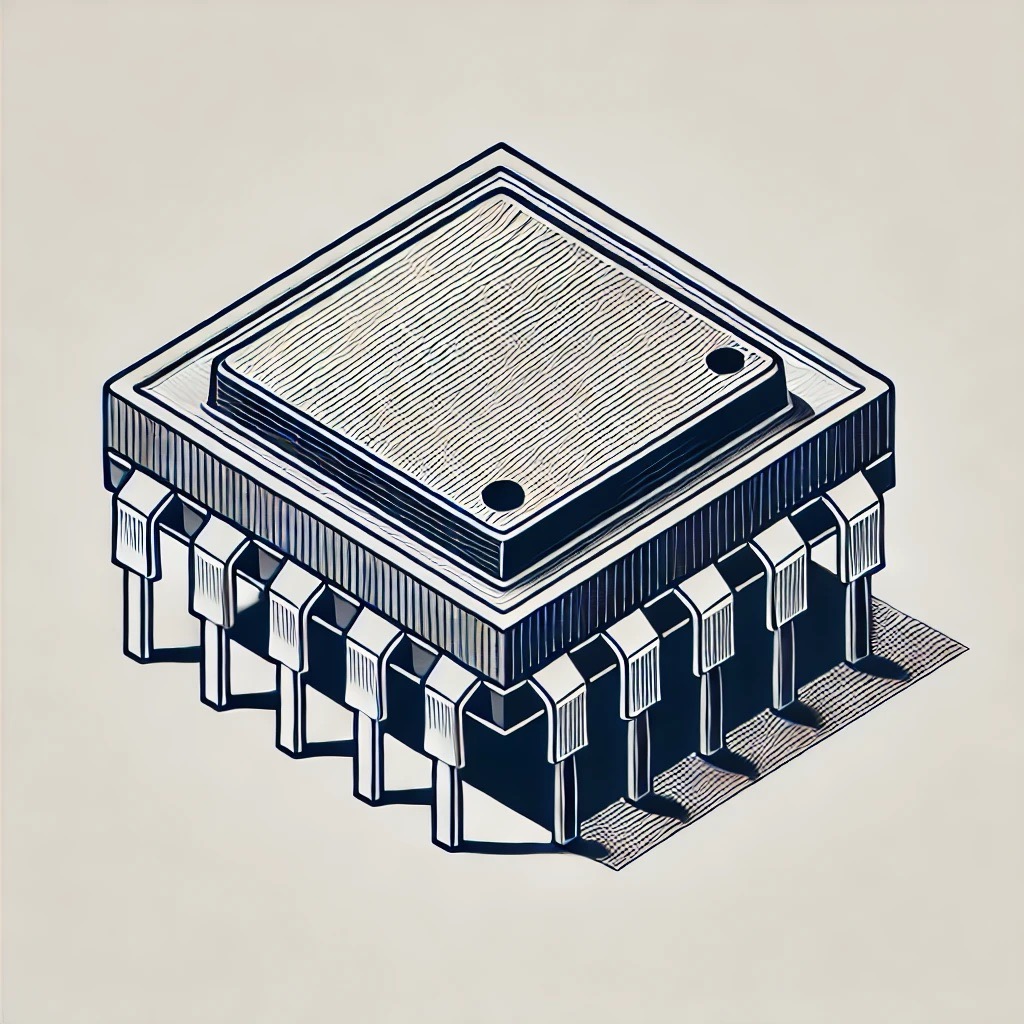Overview
The STM32F7 series, part of STMicroelectronics' high-performance STM32 family, is built around the ARM Cortex-M7 core, delivering enhanced processing power and advanced multimedia capabilities. With a focus on high-performance applications and efficiency, the STM32F7 is ideal for complex real-time control, DSP tasks, and user interface-rich embedded systems.
Key Features
The STM32F7 series offers a rich set of features that make it suitable for demanding applications:
- ARM Cortex-M7 Core with FPU: Runs up to 216 MHz, providing up to 1082 DMIPS for high-speed processing and floating-point operations.
- Memory: Flash memory options from 64 KB to 2 MB, up to 512 KB of SRAM, and a dedicated 16 KB cache for fast data access.
- Chrom-ART Accelerator: Optimized graphics rendering for complex GUIs and multimedia applications.
- High-Speed Communication: Multiple USART, SPI, I2C, CAN, and Ethernet interfaces for flexible connectivity.
- High-Speed USB 2.0: Dual-mode USB OTG support for connecting to a wide range of USB devices.
- Advanced Timers: Includes PWM, motor control, and general-purpose timers for precise control.
- ADC and DAC: 16-bit and 12-bit ADCs, DACs, and digital filters for accurate signal processing.
- Camera Interface: Supports CMOS sensors for embedded vision and imaging systems.
- Low-Power Management: Multiple low-power modes and flexible clock management for optimized power usage.
- Operating Range: Wide voltage (1.8V to 3.6V) and extended temperature range for industrial-grade applications.
Specifications
Here are the key specifications for the STM32F7 series microcontrollers:
- Core: ARM Cortex-M7 32-bit with FPU
- Clock Speed: Up to 216 MHz
- Flash Memory: From 64 KB to 2 MB
- SRAM: Up to 512 KB with 16 KB cache
- ADC/DAC: 12-bit and 16-bit ADCs, with multiple channels and DAC support
- GPIO: Up to 168 pins with multiple configurations
- Timers: PWM, motor control, and general-purpose timers
- Low-Power Modes: Sleep, Stop, and Standby modes
- Interfaces: USB 2.0, SPI, I2C, CAN, Ethernet, and Camera interface
Common Applications
The STM32F7 series is ideal for applications that demand high processing power, multimedia capabilities, and real-time control:
- Industrial Automation: Advanced control systems for manufacturing processes and robotics.
- Audio and Multimedia: High-end audio processing and multimedia applications.
- Human-Machine Interface (HMI): Supports complex GUIs for embedded systems.
- Embedded Vision: Integration of CMOS sensors for image processing in embedded systems.
- IoT Devices: Connectivity solutions for IoT gateways and networked devices.
- Medical Devices: Precision control for medical instruments and diagnostics.
- Wearable Technology: Compact yet powerful systems for fitness and health tracking devices.
Programming
Programming the STM32F7 series is facilitated by a wide array of development tools:
Development Tools
- STM32CubeIDE: A complete development environment with code generation, debugging, and project management capabilities.
- STM32CubeMX: A graphical configuration tool for generating initialization code for peripherals.
- ST-Link V3: A debugger and programmer for STM32F7 and other STM32 devices.
Programming Tools
- ST-Link: An affordable programmer/debugger with full support for STM32 devices.
- J-Link Debugger: A high-performance debugger offering advanced features for professional development.
Programming Workflow
The typical workflow for programming STM32F7 microcontrollers is as follows:
- Install STM32CubeIDE and STM32CubeMX to set up your project.
- Connect the STM32F7 to your PC using an ST-Link or J-Link programmer/debugger.
- Use STM32CubeMX to configure peripherals and generate initialization code for your project.
- Write application code in C, utilizing STM32’s HAL and middleware libraries.
- Build the project in STM32CubeIDE, compile, and flash the code to the microcontroller.
- Use debugging tools to test and optimize the firmware.
